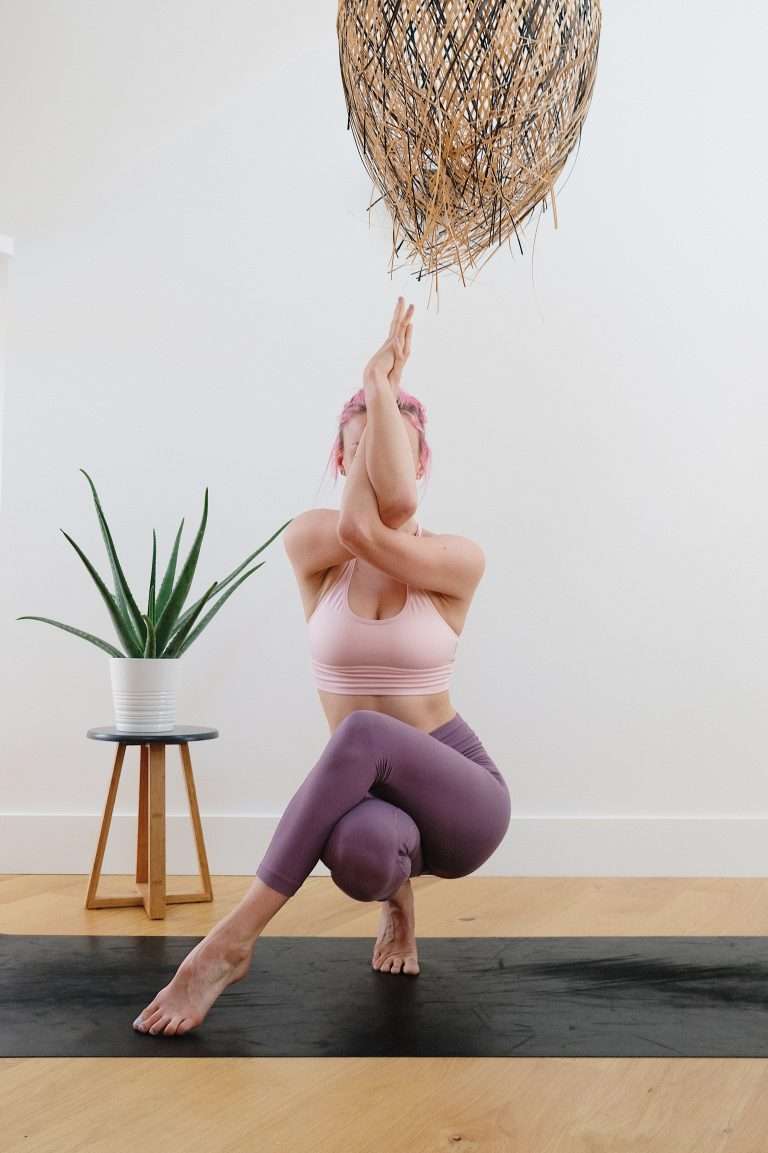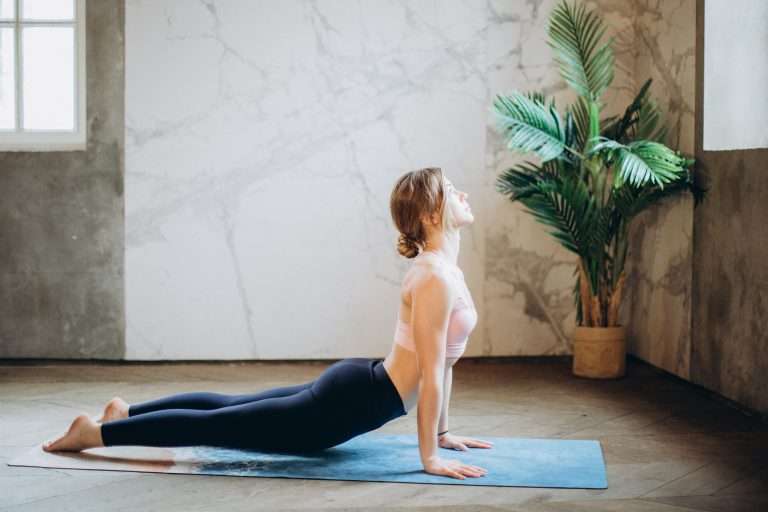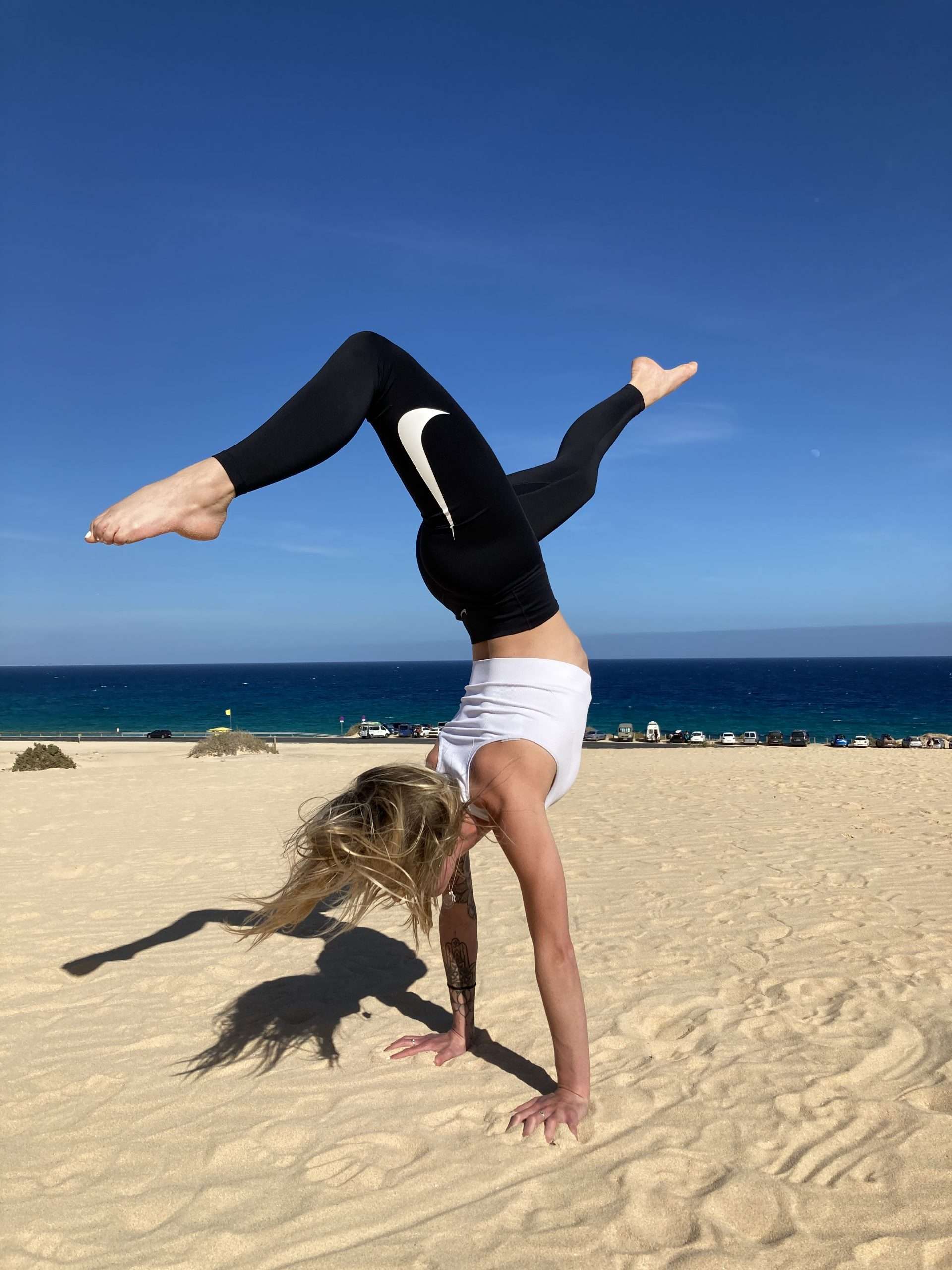Yoga For Stress Relief: Asana, Pranayama, and Meditation for More Calm

Nowadays, stress has pretty much become an inevitable companion for many. We are here to explain how you can use yoga for stress relief. While some stress is a natural part of life and a normal reaction to certain cirumstances, chronic stress can take a toll on our physical and mental well-being.
Did you know that chronic stress can cause inflammation in our body, which can lead to a number of physical illnesses, including high blood pressure, increased risk of heart attacks, immune system disorders, and even increased chronic pain. In addition, the inflammation caused by either bad diet or chronic stress has been linked to depression and other mental illnesses.
It is therefore crucial that we keep our stress levels at bay and find moments to consciously de-stress. One effective and holistic approach to combat stress is through the ancient practice of yoga. Yoga offers multiple benefits that can alleviate stress and promote harmony between the mind, body, and soul.
In this article, we will explore how to use yoga for stress relief, through the important aspects of asana (postures) and pranayama (conscious breathing). Additionally, we will delve into the connection between yoga and meditation, and how the practice of meditation further enhances the reduction of stress.
The Benefits of Asanas for Stress Relief
Yoga asanas, or postures, play a crucial role in managing stress by releasing tension and promoting relaxation. Engaging in physical movement through asanas allows the body to release endorphins, the body’s natural stress-relievers. Moreover, a regular practice of yoga asana can help improve blood circulation, reduce muscle tension, and increase flexibility. By moving our body, we allow ourselves to step outside our minds and release nervous energy.
From the perspective of physical exercise, the best heart range to promote stress relief is between 60-80 beats per minute. It is therefore not surprising that one effective way to achieve this heart rate range is through relaxation techniques, deep breathing exercises, meditation, and yoga. Engaging in these activities helps activate the parasympathetic nervous system, leading to reduced heart rate, blood pressure, and muscle tension, which are all essential for stress relief.
Let’s take a deeper look at how to use yoga asana for stress relief with these five calming yoga poses that activate our parasympathetic nervous system and help promote relaxation:
1. Child’s Pose (Balasana):
This gentle resting pose stretches the back, hips, and shoulders, promoting a sense of surrender and calmness. It helps to release tension in the lower back and encourages deep relaxation.
- Bring yourself onto your hands and knees with the toes flat on the mat
- Now release the hips all the way back onto the heels and the forehead toward the mat
- Your arms can stay extended by your ears or come next to the body
- Hold for 8 breaths
2. Forward Fold (Uttanasana):
This standing forward fold is excellent for calming the mind and relieving stress. It stretches the hamstrings and lower back while encouraging blood flow to the brain.
- Bring your feet hip distance apart and fold your upper body over your legs
- You can make this an active pose by engaging the muscles in the legs, abdomen and pressing the hands into the mat
- You can also make the pose less active by keeping the knees bend and holding onto opposite elbows in a variation known as “Rag doll”
- Hold for 5 breaths
3. Cat-Cow Pose (Marjaryasana/Bitilasana):
This dynamic duo of poses helps to release tension in the spine and neck while coordinating movement with breath. It promotes a sense of mindfulness and presence, and it is a wonderful mobility exercise for the spine.
- Come onto your hands and knees in a table top position
- On your inhale, slightly arch the spine and lift the gaze, softening the chest
- As you exhale, press hands into mat, round the upper back and tuck your chin to chest
- Repeat 5x
4. Bridge Pose (Setu Bandhasana):
This backbend not only strengthens the back and legs but also helps to open the chest, facilitating deep breathing and calming the nervous system. It is a great pose for anyone who sits a lot 😉
- Come to lie on your back, bend your knees over your feet, hands by hips
- As you inhale, press the hips up to the sky and your feet into the mat
- You can keep the hands by your side or interlace them behind your back
- Hold for 5 breaths
5. Legs-Up-the-Wall Pose (Viparita Karani):
Inverting the legs in this pose allows for better blood circulation and activates the body’s relaxation response, reducing stress and fatigue. One of my favourite poses!
- Bring the side of your hip close toward the wall
- Then lift your legs up, so they can rest on the wall
- For this one, it is nice to place on hand on your belly, one hand on your hand and follow the breath
- Hold for 25 breaths
The Power of Conscious Breathing
Conscious breathing, known as Pranayama in yoga, is a fundamental technique that complements the practice of asanas. Pranayama involves controlling the breath, which has a direct impact on the autonomic nervous system, helping to shift the body from a state of “fight or flight” (stress response) to the “rest and digest” (relaxation response) mode.
By focusing on deep, rhythmic breathing, we stimulate the parasympathetic nervous system, which is responsible for relaxation and restoration. This, in turn, decreases the heart rate, lowers blood pressure, and promotes a sense of calmness and clarity in the mind.
Furthermore, by placing our whole focus on the breath, we generate more “space” in the mind and longer pauses between the thoughts, which can help us break through the constant chatter and “monkey mind”. Pranayama is therefore another crucial tool in yoga for stress relief.
Three simple and effective pranayama techniques for stress relief include:
1. Deep Belly Breathing (Diaphragmatic Breathing):
Inhale deeply through the nose, allowing the belly to expand fully. Exhale slowly through the nose, letting the belly naturally contract. This practice immediately calms the nervous system.
2. Alternate Nostril Breathing (Nadi Shodhana):
Using the thumb, close your right nostril. Inhale through the left nostril. Close your left nostril with your ring finger and exhale through the right. Inhale through the right, then close right nostril with thumb and exhale through the left. Set a timer for a minute. This technique balances the left and right hemispheres of the brain, promoting equilibrium and reducing stress.
3. Left Nostril Breathing (Chandra Bedhana):
Similar to alternate nostril breathing, but this time, keeping the right nostril closed the whole time and inhaling and exhaling only through the left. Chandra Bedhana activates the Ida Nadi, or left energy channel or lunar channel, that runs through the left body – as explained in yogic philosophy and Ayurveda. Activating the Ida Nadi is believed to have a calming and cooling effect on the body and mind. It is associated with qualities such as receptivity, relaxation, and nurturing energy.
The Connection between Yoga and Meditation

Meditation, an integral aspect of yoga, is a powerful tool for stress reduction. Meditation encourages mindfulness and awareness, enabling individuals to observe their thoughts and emotions without judgment. By practicing meditation regularly, one can develop a greater sense of self-awareness and cultivate a calmer mind.
Mindfulness meditation, in particular, has been extensively studied for its stress-relieving benefits. Research has shown that regular meditation practice can reduce the production of stress hormones like cortisol, thus decreasing overall stress levels in the body.
Meditation also promotes changes in the brain’s neural pathways, leading to increased emotional regulation and reduced reactivity to stress triggers. Moreover, it enhances the brain’s ability to focus and concentrate, enabling practitioners to respond to stressful situations with clarity and composure.
Mindfulness meditation can come in many shapes and forms, such as being fully present and aware in a given moment.
Check out my extensive article on Mindfulness Meditation here, where I explain five different types of mindfulness exercises.
We hope you enjoyed this article and found it helpful! Remember to keep moving, breathing, and being mindful to combat any stressors you might face on a day-to-day basis.






